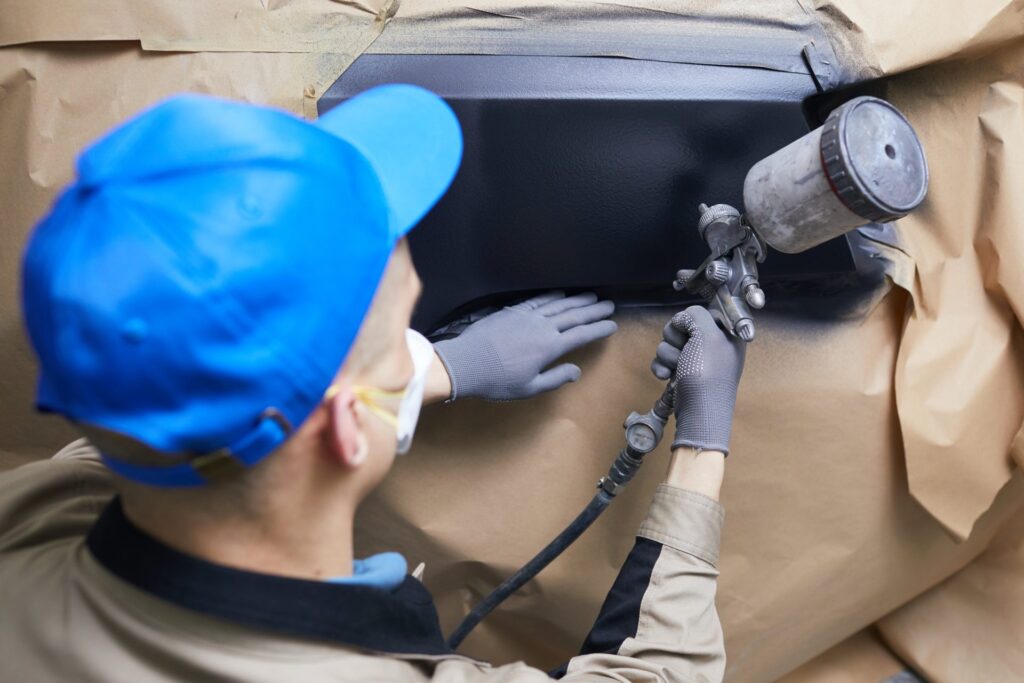
Achieve a professional-grade shine with our step-by-step instructions on how to wax your car effectively. Maintaining your car’s shine isn’t just about aesthetics; it’s a form of protection.
A proper waxing routine shields your car against environmental elements and keeps it looking pristine. Understanding the nuances of waxing techniques, suitable conditions, and the right type of wax can elevate your car’s appearance and safeguard its surface. Let’s explore a comprehensive guide on how to wax a car effectively and efficiently.
Understanding Car Wax Basics
Car waxes predominantly feature carnauba wax, derived from Brazilian palm leaves and enhanced with natural waxes and synthetic polymers. This unique blend delivers a deep, reflective gloss, safeguarding your vehicle’s surface. Our range of wax formulations, such as Smart Shield Technology and Hybrid Technology, caters to diverse application methods and desired outcomes.
Preparing for an Immaculate Waxing Session
Removing Dirt & Grime: Start with an intensive wash using a specialist shampoo like Turtle Wax M.A.X.-Power Car Wash or the new Turtle Wax Snow Foam, eliminating loose dirt without compromising any existing wax or sealants. These products boast cutting-edge formulations ideal for various cleaning tasks, leaving your car surface ready for waxing.
Tackling Defects: Carefully polishing the panels helps address imperfections and previous layers of wax. Our Turtle Wax Clean Finish Polishing Compound effectively removes grease and dirt, revealing undamaged paint. For deeper issues like swirls and light scratches, the Turtle Wax Scratch Repair & Renew, equipped with Heal & Seal technology, works wonders.
The Protective Benefits of Waxing
Waxing isn’t just about enhancing the shine; it acts as a protective layer, maintaining your car’s gloss despite its age. Properly applied wax diminishes the need for frequent polishing, ensuring a sustained, appealing appearance.
Ideal Conditions for Waxing Success
Avoid Extreme Conditions: Direct sunlight or freezing temperatures hinder the effectiveness of the waxing process. Optimal results are achieved in cooler conditions, preferably in the shade or a sheltered area to prevent contamination from airborne elements.
Choosing the Right Wax
Deciding between spray, liquid, or paste wax depends on application ease and durability. Each variant offers distinct benefits; while spray wax is quick to apply, paste wax promises longer-lasting results. Our comprehensive range of car waxes caters to every preference and budget.
Mastering Hand Waxing Techniques
Spray Wax Application: Utilize our best-selling Turtle Wax ICE Spray Wax, applying it section by section and buffing it in with a damp microfiber towel for a stunning finish. Alternatively, the new Turtle Wax ICE Seal N Shine offers a quick, slick finish on dry or wet cars.
Liquid and Paste Hand Application: Though slightly more time-consuming, applying liquids and pastes yields exceptional results. Turtle Wax Super Hard Shell Wax Paste, coupled with a foam applicator pad, buffs effortlessly in circular motions, leaving a dazzling sheen.
Employing Buffers and Orbitals
When to Use a Buffer/DA Orbital: Electric buffers expedite the waxing process, suitable for larger, flat panels. However, familiarize yourself with these tools before usage, especially with smaller, intricate car surfaces.
How to Wax with an Orbital Polisher: Start by treating minor scratches and swirl marks with Turtle Wax Scratch Repair & Renew. Then, apply the wax using a specialist applicator, ensuring minimal pressure for a flawless finish.
Specialized Care for Black Cars
Black car paintwork demands special care due to its susceptibility to revealing imperfections. Our range of black wax and polish products, notably the Turtle Wax Jet Black Spray Wax, contains a black-tinted formula that rectifies flaws while offering UV protection and a high-gloss finish.
Removing Wax from Car Trim
Residue buildup on trim surfaces can occur post-waxing. To address this, utilize Turtle Wax Trim Restorer, restoring the trim’s original shine. Follow the instructions meticulously for effective wax removal.
Conclusion
In conclusion, waxing your car transcends routine maintenance; it’s a commitment to preserving its luster and value. Mastering the nuances of preparation, wax types, application techniques, and troubleshooting residual buildup empowers you to protect and maintain your vehicle’s appearance. Ultimately, waxing becomes more than a cosmetic endeavor—it’s an investment in longevity, ensuring your car gleams for miles to come. Check out more articles related to The Dos and Don’ts of Car Detailing .

